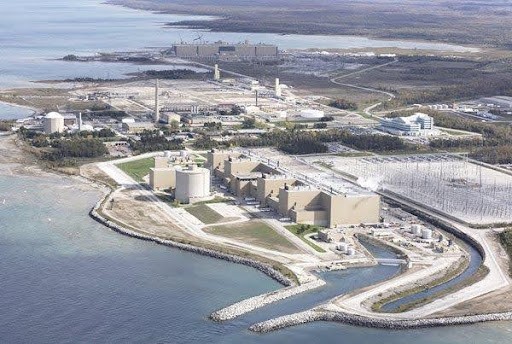Approximately 15% of Canada’s electricity comes from nuclear power.
For several years, Canada has been a leader in nuclear research and technology, exporting reactor systems developed in Canada, as well as a significant proportion of the world’s supply of radioisotopes used in medical diagnosis and cancer therapy. The World Nuclear Association (WNA) reported in January 2025 that approximately 15% of Canada’s electricity comes from nuclear power. Potentially, the heat produced by a nuclear plant can also be used to supply district heating for buildings and industrial processes, as well as for manufacturing.
Canada’s plans to build new large-scale nuclear capacity have largely been deferred, lapsed, or dropped in favor of refurbishing existing capacity. In 2022, Ontario’s Independent Electricity System Operator forecasted that it would likely need to double its current electricity generation capacity (42,000 MWe) by 2050. New reactors have huge infrastructure costs. For example, Ontario’s four-unit Darlington nuclear station was completed in 1993, after more than a decade of construction and delays, for $14.5 billion, nearly double the initial estimate. It’s currently undergoing a $ 12.8 billion refurbishment so that it can operate until 2055.
The WNA highlights two notable developments in Canada’s nuclear evolution over the past decade. Refurbishment projects at Darlington, Bruce, and Pickering have been underway as part of a C$26 billion 15-year program initiated in 2016. The second development relates to international leadership on small modular reactors (SMRs). In 2020, NRCan released a Canada SMR action plan to address climate change, regional energy demand, economic development, and research and innovation opportunities.
Canada’s Energy Regulator projects considerable growth for small modular reactors (SMRs), particularly during 2035 to 2050. In 2022, Ontario, Saskatchewan, New Brunswick, and Alberta released a Strategic Plan to deploy SMRs. In the fall of 2022, Ontario Power Generation began site preparation and applied to the Canadian Nuclear Safety Commission for a license to construct an SMR at the Darlington nuclear site, with a projected cost of $9,180 per installed kilowatt of capacity in 2030, decreasing to $7,080/kW by 2050.
SMRs are smaller than conventional nuclear power plants in terms of size and power output. The modular aspect of SMRs means many components of a facility are factory-built, shortening plant construction times. SMRs can be used to generate electricity and to produce steam for some industrial applications.
In February 2023, Canada launched the ‘Enabling SMR Program’ with C$29.6 million. Applicants can request up to C$5 million for R&D projects, with a maximum of 75% of the total project costs or 100% if led by indigenous applicants.
In November 2023, the government revised the Green Bond Framework to explicitly permit “the deployment of nuclear energy to generate electricity and/or heat.” The first issue of $ 4 billion was sold in February 2024. Additionally, the Canadian Nuclear Safety Commission (CNSC) has a pre-licensing vendor design review process that evaluates SMR vendor designs. The Canadian Nuclear Laboratories invited expressions of interest for an SMR at its Chalk River site by 2026, alongside prototypes including fusion-based technologies, hydrogen production, battery storage, and clean fuel production facilities.
The CNSC regulates all stages of the life of each nuclear power plant in Canada, including licensing, design, environmental reviews, and Indigenous consultation and engagement. Today, five plants in three provinces house 22 nuclear power reactors. All are CANDU (Canadian Deuterium-Uranium) reactors, which are pressurized heavy water reactors that utilize natural uranium as fuel and heavy water as both a coolant and a moderator. Canada’s uranium is sold exclusively for electrical power generation, and international safeguards are in place to ensure this. Nuclear equipment and services are for peaceful uses only.
Of course, there are costs and issues related to waste management. Waste generated is currently still stored at nuclear power stations despite decades of operation. After cooling, used fuel bundles are placed in large dry concrete and steel containers, thick enough to shield radiation effectively. A decision on the location of a Canadian nuclear waste deep geological repository site has recently been completed.
In November 2024, the Nuclear Waste Management Organization (NWMO) announced that the Wabigoon Lake Ojibway Nation-Township of Ignace had been selected as the host community, concluding a 14-year consent-based siting process. OPG is the owner and licensee of the repository; however, NWMO was contracted to manage its development. Next is a lengthy regulatory decision-making process and impact assessment, followed by approximately 10 years of construction.
In closing, nuclear energy, as a non-emitting source, continues to engage public debate, as the processes for mining and refining uranium ore and producing reactor fuel all require large amounts of energy.
This Post was submitted by Climate Scorecard Canada Country Manager, Diane Szoller.


